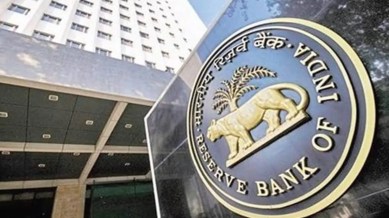Extreme weather, prolonged geopolitical tensions pose risks to inflation in near-term: RBI article
Food inflation, despite some signs of moderation, remains elevated and a potential source of risk to the disinflation trajectory, the ‘State of the Economy’ article published in the RBI’s March bulletin said.

Adverse weather conditions and extended geopolitical conflicts that can result in volatility in crude oil prices may pose a threat to inflation in the near term, an article published in the Reserve Bank of India’s (RBI) monthly bulletin said. Consumer price index (CPI) inflation has gravitated to 4.9 per cent in March after averaging 5.1 per cent in the preceding two months following the recent peak at 5.7 per cent in December 2023.
Food inflation, despite some signs of moderation, remains elevated and a potential source of risk to the disinflation trajectory, the ‘State of the Economy’ article published in the RBI’s March bulletin said. Careful monitoring during the summer is warranted as overlapping food price shocks play out, before an above normal Southwest monsoon this year, as projected by the India Meteorological Department (IMD), enabling an easing of food price pressures.
“In the near term, however, extreme weather events may pose a risk to inflation along with prolonged geo-political tensions that could keep crude oil prices volatile,” the article prepared by RBI Deputy Governor Michael Patra and other central bank officials said. The RBI said the views published in the article are of the authors and not of the institution.
The article said that the World Meteorological Organization (WMO) sounded a red alert about global warming in its latest report “State of the Global Climate 2023”, stating that there is a high probability that 2024 will breach the threshold set in 2023 as the hottest year on record even as the world careens towards a freshwater shortage crisis.
According to the WMO report, “data from the Indian Meteorological Department (IMD) reflects a worrying escalation in extreme weather events necessitating an urgent and collective response.” However, according to Australia’s Bureau of Meteorology and the US National Oceanic and Atmosphere Administration, the chances of La Nina – which results in heavy rainfall in India – emerging after June have increased even as El Nino is dissipating, it said.
On the economy, the article said in India conditions are shaping up for an extension of the trend upshift that took the average real gross domestic product (GDP) growth above 8 per cent during 2021-24. “In order to achieve its developmental aspirations over the next three decades, the Indian economy must grow at a rate of 8-10 per annum over the next decade to reap the demographic dividend that started accruing from 2018 and, as calculations show, will last till 2055,” it said.
So far, capital deepening is powering the step-up in the growth trajectory, led by sustained public investment, and supported by productivity improvements. More recently, a resurgence of private investment has become visible, according to the Asian Development Bank (ADB), which is shifting its investment strategy to expand space for private capital. The conditions are apposite, with the credit quality of Indian corporates having strengthened on the back of deleveraged balance sheets, sustained domestic demand and public capital expenditure – rating upgrades have continued to surpass downgrades, the article said.
“For India to harness its favourable demographics and achieve the escape velocity required to breach the low middle income barrier, the developmental strategy over the next few decades must centre around extracting the maximum possible contribution of its young and rising labour force to the growth of GVA (gross value added),” the article said.